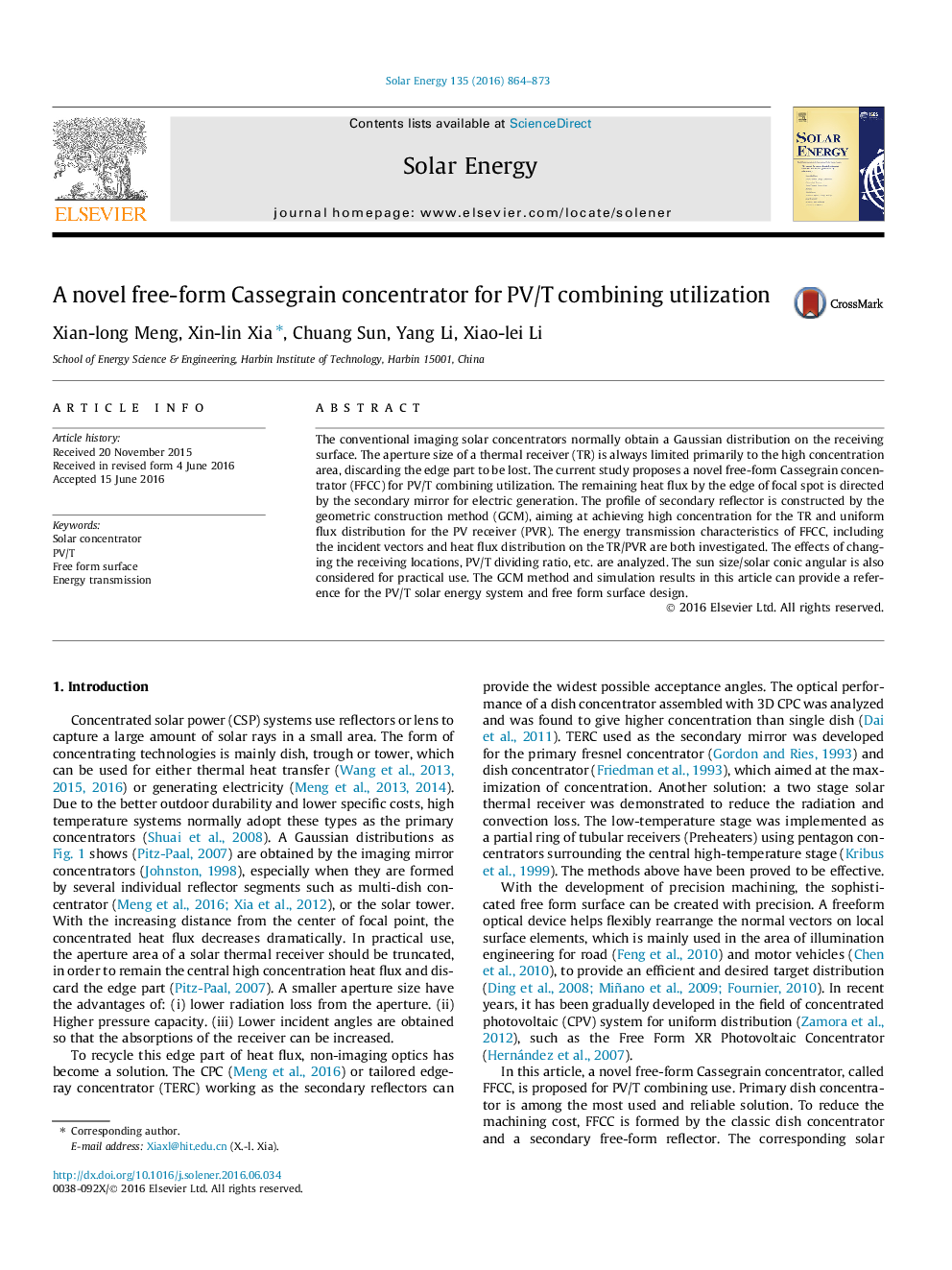| Article ID | Journal | Published Year | Pages | File Type |
|---|---|---|---|---|
| 7936941 | Solar Energy | 2016 | 10 Pages |
Abstract
The conventional imaging solar concentrators normally obtain a Gaussian distribution on the receiving surface. The aperture size of a thermal receiver (TR) is always limited primarily to the high concentration area, discarding the edge part to be lost. The current study proposes a novel free-form Cassegrain concentrator (FFCC) for PV/T combining utilization. The remaining heat flux by the edge of focal spot is directed by the secondary mirror for electric generation. The profile of secondary reflector is constructed by the geometric construction method (GCM), aiming at achieving high concentration for the TR and uniform flux distribution for the PV receiver (PVR). The energy transmission characteristics of FFCC, including the incident vectors and heat flux distribution on the TR/PVR are both investigated. The effects of changing the receiving locations, PV/T dividing ratio, etc. are analyzed. The sun size/solar conic angular is also considered for practical use. The GCM method and simulation results in this article can provide a reference for the PV/T solar energy system and free form surface design.
Related Topics
Physical Sciences and Engineering
Energy
Renewable Energy, Sustainability and the Environment
Authors
Xian-long Meng, Xin-lin Xia, Chuang Sun, Yang Li, Xiao-lei Li,
